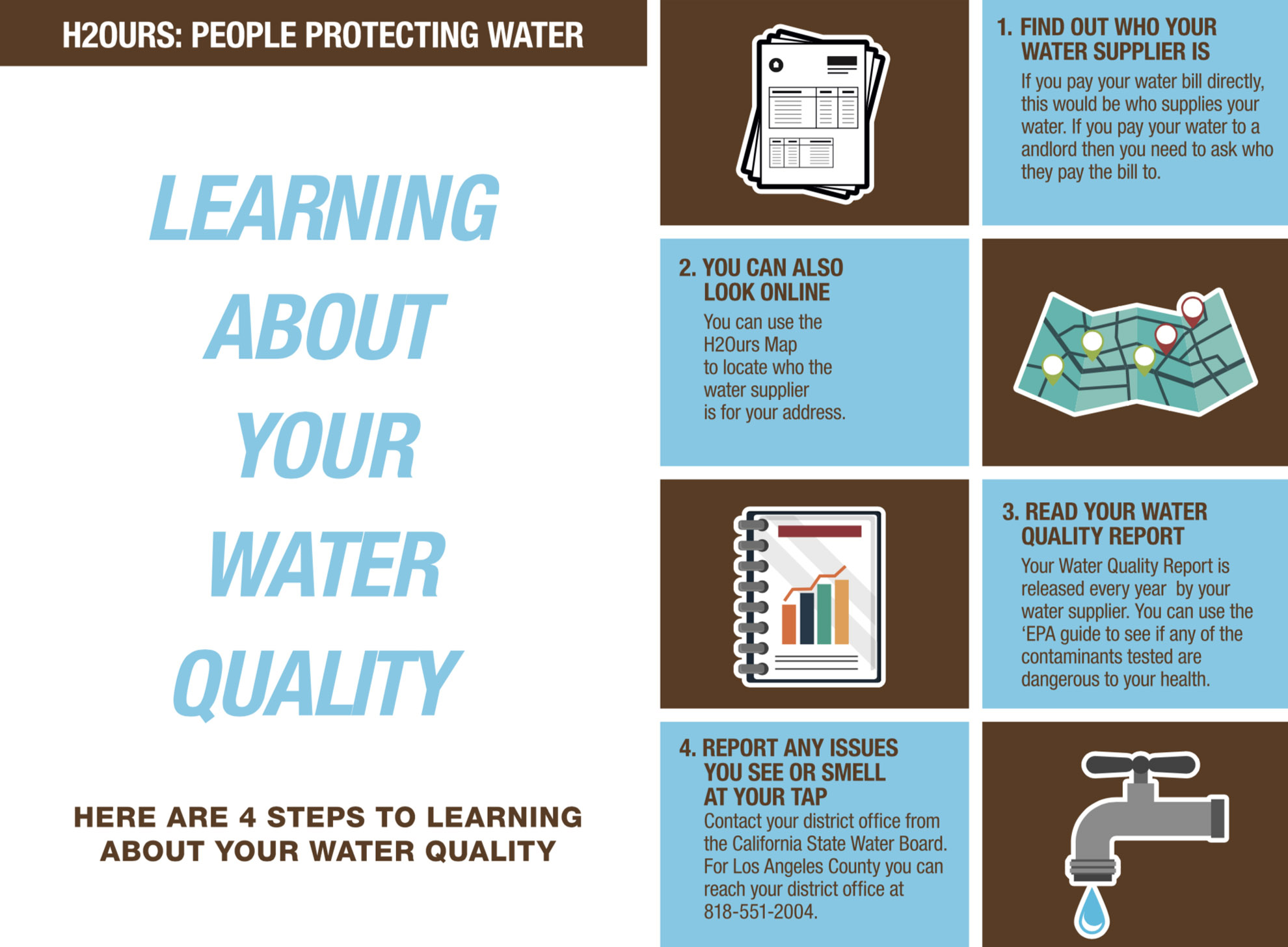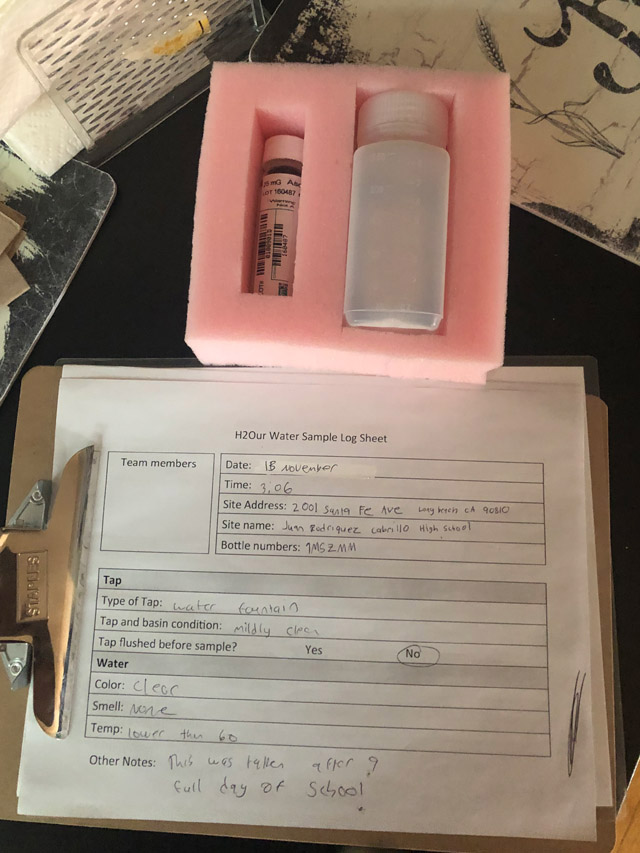
About:
H2Ours -People Protecting Water is a collaboration between The Urban and Environmental Policy Institute (UEPI) at Occidental College and three communities in Los Angeles County represented by East Yard Communities for Environmental Justice (EYCEJ). Utilizing a community-based model of research, advocacy, and policy engagement, community leaders, EYCEJ, UEPI and Occidental College students and faculty, collaborated to understand and develop tools, resources and recommendations related to the quality of drinking water and issues embedded in navigating the regulatory landscape in communities where EYCEJ organizes. H2Ours -People Protecting Water worked in East Los Angeles, Long Beach, and the communities within Southeast Los Angeles County.
Purpose:
This guide is intended to provide residents of Los Angeles County: 1) Access to public information regarding drinking water quality, water governance, and water management using an interactive map that you can link to below, 2) General information regarding water suppliers, water quality reports and contacts regarding drinking water quality, 3) Where drinking water is generated and comes from, 4) General information on drinking water contamination, and 5) Suggestions and resources for collecting and testing the quality of tap water.
As you read through this guide you will learn more about the drinking water in Los Angeles County and find resources that will encourage you to become more engaged with the agencies and municipalities that are responsible for the quality and safety of the water you and your community drink.
H2Ours- People Protecting Water should also be considered as a resources. For questions and/or information on ways to collaborate, please contact [email protected]

Interactive Map:
This web-based ArcGIS interactive map is meant to be used to gain more information about the quality of the drinking water in Los Angeles County. The interactive map includes findings from the State Drinking Water Contamination Index and the State Water Board’s Lead in Schools Sampling initiative and the Community Drinking Water Sampling. The map is intended for residents to learn about the general quality of the drinking water, the existing results of lead testing in schools, and the quality of drinking water in specific locations. The map is available on-line at the following address: www.h20urs.org/map
How to use the web-based ArcGIS interactive map:
Click on the link, read, and accept the disclaimer at the center of the page. You can then get started by entering your address using the search button or by clicking on the page and scrolling through the map. Once you identify a location you can click on the feature, a pop-up window will provide the Drinking Water Contaminant Index which will display the Drinking Water Contaminant Percentile and the Water Provider which will have a link to the Water Quality Report. You can also find the results of the California School-Requested Lead Samples and the Community Drinking Water Samples collected by H2Ours teams members at 26 locations in the Study Area.






Testing your drinking water:
There are several reasons why one may decide to test their drinking water; taste, color, odor, staining of clothes or fixtures, composition of your home’s plumbing material, and concerns over yours and your family’s health. While public water systems are subject to state and federal regulations, aging infrastructure and the environment you live in, can affect your drinking water. If you are experiencing or seeing any of the following conditions, you should consider testing your drinking water:
- Recurrent gastrointestinal illness
- Household plumbing contains lead
- Scaly residues, soaps don’t lather
4. Stained plumbing fixtures, laundry
5. Objectionable taste or smell
6. Water appears cloudy, frothy or colored
7. Corrosion of pipes, plumbing
8. Gas drilling operation nearby
9. Odor of gasoline or fuel oil, and near gas station or buried fuel tanks
10. Dump, junkyard, landfill, factory or dry- cleaning operation nearby
11. Salty taste and seawater, or a heavily salted roadway nearby





Instructions for Collecting Water Samples:
Step by Step
1. Document the location
- Address or cross streets and name of the site.
- Photograph the location and take video.
2. Document the tap conditions
- What type of tab is it, fountain, dispenser, sink etc.?
- Is the tap and basin clean, dirty or have any other issues?
- Take photos or video
Email all photos and videos to:
[email protected]
3. Fill the bottle to the neck. Do not overfill or under fill. Do not let the water overflow. Do not let fingers or other objects come in contact with the sample, the bottle or the inside of cap.
- Document whether you flushed the tap before drawing your sample
- Document the color and smell of the tap water
- Take and document the temperature of the water at the tap.
- Take photos or video your team taking the sample.
TEAM MEMBERS AND ROLES
Sample Taker
Select 1 or 2 people to help collect water from the tap that your group has identified
Information Collector
Select 1 or 2 people to collect information while your team is collecting the
water samples
Photographer and Videographer
Select 1 person to take photos and videos
Instrucciones para Colectar Muestras de Agua:
Paso por Paso
1. Documente la ubicación
- La dirección o cruce de ca lies y el nombre del sitio.
- Fotografíe la ubicación y tome video.
2. Documente las condiciones del grifo
- Qué tipo de grifo es, fuente, dispensador, fregadero, etc.?
- ¿EI grifo y la cuenca están limpios, sucios o tienen algun otra caracterfstica?
- Tome fotos o vídeos.
Email all photos and videos to:
[email protected]
3. Llene la botella hasta el cuello. No Ilene demasiado o insuficientemente. No dejes que el agua se desborde. No permita que los dedos o otros objetos entren en contacto con la muestra, el frasco o el interior de la tapa.
- Documente si deja correr el grifo antes de colecta su muestra.
- Documente el color y el olor del agua del grifo.
- Tome y documente la temperatura del agua en el grifo.
- Tome fotos o haga un video de su equipo tomando la muestra.
Envie todas las fotos y videos por correo electrónico a:
[email protected]
Miembros del Equipoy Responsabilidades
Tomador de Muestras
Seleccione· 1 o 2 personas para ayudar a colectar agua del grifo que su grupo ha identificado
Recopilador de información
Seleccione 1 o 2 personas para colectar información mientras su equipo colecta las muestras de agua
Fotógrafo y Camarógrafo
Seleccione 1 persona para tomar fotos y videos

List of Labs
Below are a list of labs that are state certified and do commercial testing located in the SELA area. For additional locations visit: waterboards.maps.arcgis.com
Name
Phone Number
Address
Website
Crosby & Overton Analytical Laboratory
562-432-5445 ext. 273
1655 Canal St Long Beach, 90813
Applied Microbiological Services (AMS)
562-495-9500
538 West Gaylord St Long Beach, 90813
Positive Lab Service
213-745-5312 ext 322
781 East Washington Blvd Los Angeles, 90021
American Scientific Laboratories, LLC
323-223-9700
2520 North San Fernando Rd Los Angeles, 90065
Patriot Environmental Laboratory Services, Inc.
310-670-7900
5830 Hannum Ave Culver City, 90230


Address:
Urban & Environmental Policy Institute | Occidental College
1600 Campus Road (M-1)
Los Angeles, CA 90041
Email:
Phone:
323-259-1407
